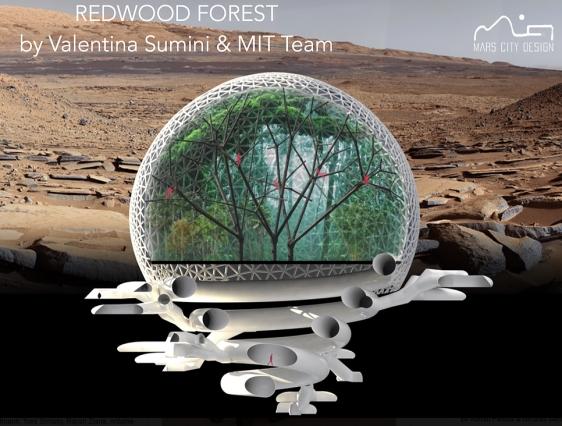'Redwood Forest' Solar-Powered Domes Offer Green Way To Live On Mars
MIT researchers developed a way for humans to live on Mars. Their project, "Redwood Forest," won an award for their architectural design, which features connected underground communities that thrive with forests protected by domes on the surface.
Updated May 24 2019, 8:27 a.m. ET
Living on Mars is an idea that continues to gain traction every day. There are even competitions for the best projects that offer ideas as to how to make it a reality. For example, the Mars City Design is an organization that gives these awards to innovators annually. At the top of their list in the “Architecture” category this year is Redwood Forest, submitted by the Massachusetts Institute of Technology (MIT).
The Redwood Forest project, led by MIT postdoc Valentina Sumini and assistant professor Caitlin Mueller, focuses on creating habitats inside of domes. Each dome would house a unique forest that protects and provides an open space for water and plants. Underneath the surface is a series of tunnels that would be able to hold up to 50 people.
In total, the project would be able to give up to 10,000 people new homes on Mars as the team is aiming toward building 200 domes. The idea of living underground is to completely protect the community from the extreme conditions on the planet’s surface. This would also provide easy transportation among the other dome establishments.
While there has been research in creating greenhouses under Mars’ surface, the Redwood Forest project provides an alternative look of keeping these plants on the surface. Each habitat will have solar panels that generate energy, and this will also transport water into cells inside of the dome to protect from radiation and to provide insulation. That energy would also be used to produce oxygen, rocket fuel, and charging hydrogen fuel cells for backup power.
“On Mars, our city will physically and functionally mimic a forest, using local Martian resources such as ice and water, regolith (or soil), and sun to support life,” Sumini said in an MIT news release. “Designing a forest also symbolizes the potential for outward growth as nature spreads across the Martian landscape. Each tree habitat incorporates a branching structural system and an inflated membrane enclosure, anchored by tunneling roots.”
This concept doesn’t have to be limited to Mars. Hyperloop technology is already in the process of creating an underground network for traveling and these communities could be plugged into it. These domes would also provide more living space on Earth by making the worst climates habitable. MIT cites examples of “high latitudes, deserts, and the sea floor.”
Mars City Design gives out numerous other awards in categories such as urban design, transportation, and sustainable energy. Their goal is to create a blueprint for sustainability on the planet -- not just exploring the area, but to settle on it. Egyptian architect Samer El Sayary won first place in the “Sustainable Energy” category with the “Tree of Life,” which focuses on high-frequency vibrations for growth instead of sunlight.
“This will be the first generation of trees to be planted on Martian soil,” El Sayary told Wired. “Vibrations are the most abundant and effective way to harvest energy, instead of the traditional solar photovoltaic cells, which depend totally on only one source – the Sun.”

